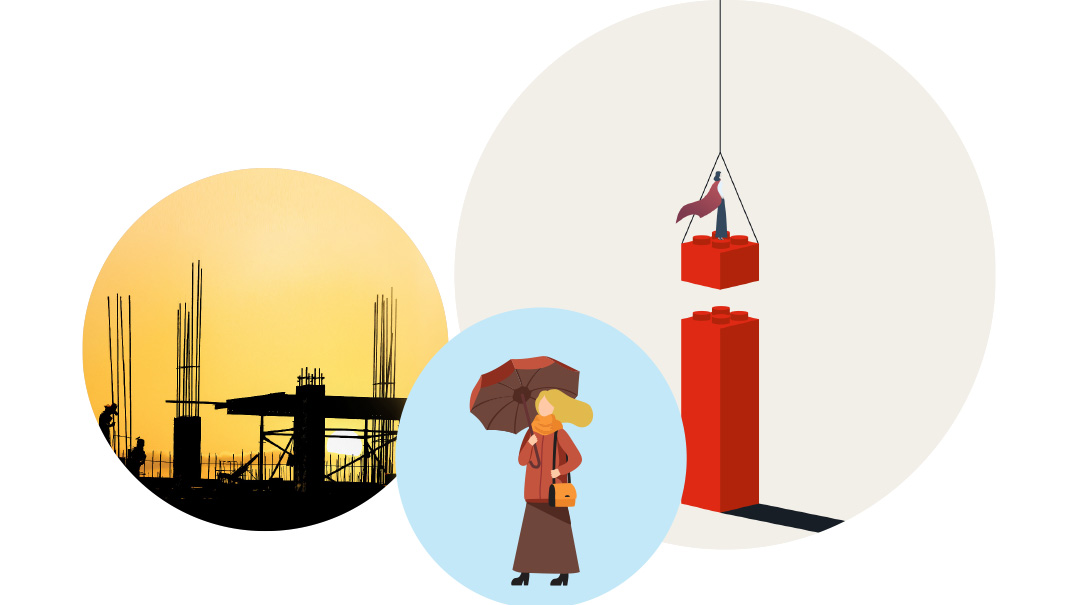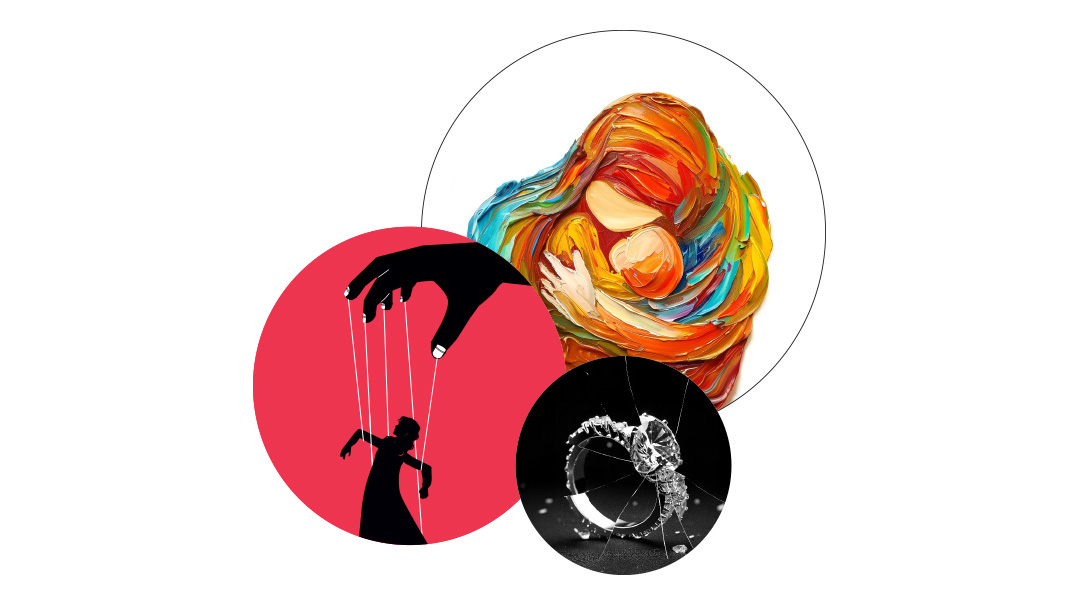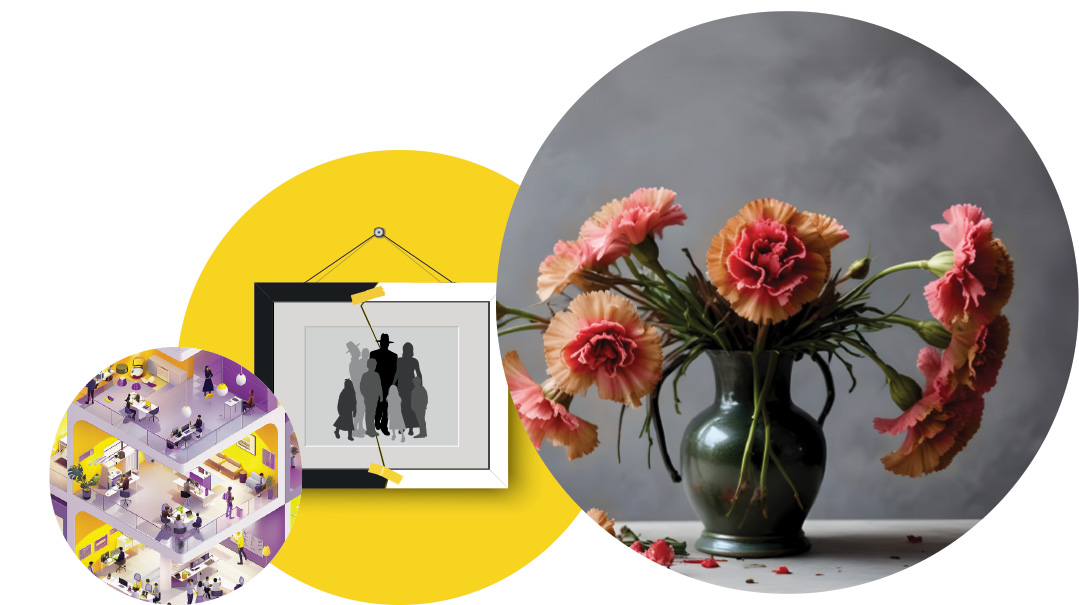Family First Inbox: Issue 838

“Assign me with a Day of Defiance — so I can publicly, proudly buck the intimidating silliness. Perhaps I’ll be a voice of reason”

It’s Got a Name: Gaslighting [Standby / Issue 836]
This serial about four single young women’s experiences is both realistic and frightening, and also deeply important. The description of Ari’s behavior touched a deep chord inside me, as his words and behavior patterns are eerily familiar to those of my ex-husband. I, too, heard stories of his kindness and greatness, how he’d stop his life to do every kind of chesed for others, and raise enormous amounts of money for tzedakah.
Behind closed doors, away from the public recognition his actions brought, he was utterly the opposite. I’d like to name the frightening and convincing manner of assuring another person that their memories are entirely incorrect: Gaslighting.
Being gaslighted is a terrifying and confusing experience, making people doubt themselves, their perceptions of reality, and even their sanity, when faced with a strong, indignant, and powerful voice assuring them that they remembered wrongly. The “gaslighter” gets away with harsh and coercive language and behavior, time and time again.
Thank you, Family First, for your courage in presenting this kind of behavior; it can be nuanced, confusing, and hard to spot. For young women on the dating scene, know that your gut feeling is usually correct. Feeling uncomfortable or confused, or being made to doubt your memories of reality, is a definite red flag.
May this raised awareness help prevent further suffering and confusion, at least before one is tied into marriage.
Name Withheld
Baalas Chesed or Codependent? [Touch Base / Issue 836]
I respectfully disagree with Mrs. Batya Weinberg’s line in her recent column about giving to the klal, “It isn’t likely that the gratification you get from your community work is something to worry about.” Although I’m not a mental-health professional, I have some life experience, and have seen time and time again that among frum woman, selfless giving often masks a codependency issue, in which a woman has a huge hole inside of her that is filled by being the indispensable helper to all those in need. If someone does get tremendous joy from being the hero of the hour, I’d encourage them to ask themselves: Am I lending those in need some of my strength, or am I reinforcing their weakness?
Raizy Jotkowitz
Mrs. Batya Weinberg Responds:
I agree with much of what Raizy Jotkowitz says. For example, we hopefully raise our children and teach our students to give from a place of strength. This is the mitzvah of “walking in His ways,” which is to give to others, as He does.
Nonetheless, that doesn’t cancel out lower level or even flawed giving. I bet most women reading this sometimes give to make themselves feel better, and, for many, it’s a salve for emotional pain. The fact that giving feels good and is therapeutic is a gift built into creation, and helps us keep it up. If there is a hole that needs to be healed — as Raizy rightly points out is often the case — get the help you need, and hopefully, long term, you’ll be able to give better and more, from a healthier place.
Most people aren’t pathological. Therefore, telling our original questioner, “It isn’t likely that the gratification you get from your community work is something to worry about” is correct. While it’s possible that she belongs to the pathological minority, she’s more likely to be part of the “good enough” majority.
Whereas specific circumstances may demand stepping back in our giving, one would’nt want to ever mistakenly undermine precious Jewish values by casting chesed or contributing in anything but a positive light. Therefore, the bandying about of “codependency” is tricky. Some of what is referred to as codependency is problematic by both Torah and secular yardsticks. However, much of what’s thrown into the often confusing codependency basket is just the normal drive to give, to be appreciated and loved through that giving, and avoid bad feelings that come from letting people down. There isn’t anything wrong with that.
From a Torah perspective, it’s important to differentiate. We were created to give. There’s “masked giving,” to borrow Raizy’s excellent phrase, which should refer to what isn’t giving at all, but harming. This takes us in the wrong direction. Then there’s imperfect or underdeveloped giving skills that take us in the right, sometimes bumpy direction, proffering growth and mitzvah dividends in our lifetime and beyond. “Codependency” has a very wide, loose, and always negative connotation. It’s important to take caution with its use so as not to cast aspersions on anything the Torah places on the positive side of the grid.
I haven’t yet found leading rabbinic opinions who disagree with any of this.
Additionally, before print, I sent the piece under discussion to a few top-grade therapists for review and received warm approval. On the whole, they took issue with the trend to over-question our giving.
The words of Eishes Chayil, ode to the Jewish woman, have always been and will always remain a Jewish woman’s mission statement and clarion call. Each woman reading this will be accompanied on her final journey by those words, describing her contribution to her family and community. We may not be there yet, because only perfect people achieve perfect giving. We’re trying, though, and in the meanwhile, it’s practice that makes perfect.
Giving Is Good [Growing Up / Issue 834]
I loved reading about Dr. Shira Kessler’s research on emerging adulthood. Dr. Kessler writes that autonomy equals adulthood and explains beautifully how this autonomy presents very differently in our communities than it does in the general secular public.
I take issue with one idea among many excellent points. One of the markers for adulthood that she strongly rejects is identifying grown-up status with “being a giver.”
However, I think we do rightfully link the quality of our character, maturity, and our departure from childhood based on our giving. “What did you buy me?” “Can I have some?” are classic kiddy lines. A 60-year-old man who talks that way isn’t acting age appropriately. “Look what I bought you’’ and “Would you like some?” are the types of speech one would expect with more frequency as we become adults.
The fact that people are born with closed fists and die with open hands brings home this very point.
Additionally, the author seems dismayed that many of our young women who ostensibly value giving don’t extend that same value to giving to themselves. There’s a good reason for that. “Giving to yourself” is often very important, and it’s crucial to know how to do that. But “giving to yourself” is still a euphemism. It means taking.
Obviously, adults have reasonable needs, and just as children have needs that must be met, the child in us does, too. We sometimes need to take in order to stay healthy, recharge, or have the energy to keep giving.
Our therapist friends will rightly point out the necessity of a strong self along with selflessness, the importance of listening to your inner voice, knowing when takers have crossed lines that you can’t live with, and the dangers of giving in an imbalanced way in an abusive relationship. All true.
But pathological circumstances aren’t what sets our values, and we value giving. We say every morning in Shacharis, “These are the actions that are without boundaries — gemilus chasadim.” The more, the better.
I’m gratified to learn of Dr Kessler’s research, that so many young women continue to rightfully associate adulthood with giving. Life is one long process of learning to imitate our Creator by growing up and becoming the biggest giver we can be.
Young women often need a learning curve in figuring out how to give smoothly, but perfect giving will come through practice and further maturation. The key is encouragement, not dissuasion. The fact that giving is a marker for adulthood sounds just right.
ZBF
Let’s Buck the Problematic Social Norms [Day of Defiance / Issue 833]
I was very intrigued when I saw the article’s introduction: “The day they bucked a social norm.” But I was disappointed that none of the writers chose to buck the entrenched social norm that needs bucking.
I love and respect the frum world in a million ways. I appreciate our herd mentality when it comes to following our gedolim and minhagim, or conformity to those social norms that protect and ensure some component of Yiddishkeit. I can embrace or accept such norms as men wearing black or dark and white, a kippah davka with a seret (band), and women dressing in a dignified and identifiably frum way.
But I have never been able to come to peace with some of the “need” for strict adherence to non-Yiddishkeit-related social norms.
I’m dumbfounded that the frum community has accepted the money-driven fashion influencers that each season gozer a new accepted style, and “outlaw” last year’s outfits. What was then beautiful, appropriate, and tasteful, is now seen as unfit to wear.
A woman can’t buy a chasunah gown to wear 10 or 20 times to all her siblings’, cousins’, and daughters’ chasunahs. She needs to rent a different outfit each time at prices that can exceed a purchase (with tailoring).
We embrace the “in” brand-name designers and labels, and not just quality, design, and fit (and price).
We allow narrowly constricted trends of what is accepted for our children (yes, I read your articles and discussion about buying “in” brands for children for camp, school, etc.). We “force” people to pay exorbitant amounts to preserve conformity, even when it’s financially imprudent/reckless or even ruinous.
I was hoping that your social experiment would try bucking these norms. Why? Because these have serious consequences — families are pushed beyond their financial means in order to adhere to strict non-Torahdig “orthodoxies” because their children aren’t accepted, are ostracized, and even ridiculed for not conforming to baseless rules.
We belittle our nation when we “worship” and blindly follow the “cult” of this season’s fashion and in-brands.
I’m not talking about wearing something less nice, lower quality, or something you don’t like. I’m talking about our communities following the whimsically fabricated rules of the fashion industry. I recognize that it will decrease the livelihood of businesses that make money on this silliness (reverse disclaimer: I have one of those), but more importantly, it liberates those who can’t afford to waste money on unnecessary and nonsensical purchases.
I’m not referring to someone who works in the secular business world, and feels the need to play their games for the sake of parnassah. I’m talking about dressing within heimish schools, camps, chasunahs, and communal gatherings.
We’re making a chasunah for our son. It’s already costing us more than I feel comfortable spending, but I have been told by rabbanim that we should agree to the higher-priced hall, photographer, videographer, etc. that the kallah and her family want and pay for shalom bayis. My wife told me yesterday that we need matching rental gowns for all the women — grandmothers, siblings, and nieces, whether or not they already own gowns, otherwise we won’t be doing what is accepted (the “social norm”).
Assign me with a Day of Defiance — so I can publicly, proudly buck the intimidating silliness. Perhaps I’ll be a voice of reason. Perhaps I’ll be a voice for those silenced by our own furtive Cancel Culture. Perhaps I can help lower the expectations and broaden the possibilities for those who can’t, or don’t want to play “follow the leader,” or to have more Torahdig-focused values and priorities.
Until then, I can’t sign my name. I’m not strong enough to face off alone against the fashion police. But if Family First would extend their assignment to your readers to buck this more insidious social norm, perhaps we can be fortified from buckling under the forceful, coercive fashion codes that have seeped into our community.
Name Withheld
(Originally featured in Family First, Issue 838)
Oops! We could not locate your form.







